Opinion & Analysis
Hole-By-Hole: The Best and Worst Shots in Masters History (Front 9)
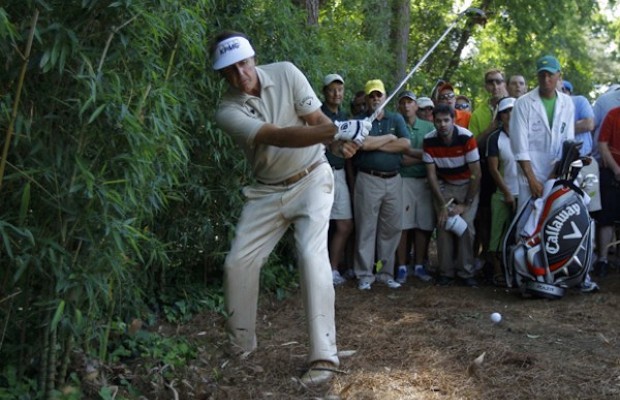
Everyone has their favorite moments from the Masters. But what are the best and worst shots in Masters history for each hole at Augusta National?
From shots that directly impacted the outcome of the tournament, to others that were impossibly shocking, miserable, or symbolic in their own right, every hole has a story to tell.
77 years, over 3,000 different players, and more than 1 million shots taken. These are the legendary bests and worsts forever etched in Masters lore.
Related: Hole-By-Hole: The Best And Worst Shots In Masters History (Back 9)
No. 1: Tea Olive — Par 4, 445 yards
The Best
It wasn’t a particularly long drive. It didn’t set up a scoring opportunity. But 39-years ago Lee Elder became the first black man to play in the Masters, and his opening drive on Tea Olive ripped through the color barrier at Augusta National once and for all.
By the late 1960s, Congress was troubled that no African-American had ever played in the Masters. And in 1973 they called for Augusta co-founder Clifford Roberts to extend a special invitation to Elder. The soft-spoken Elder would have none of it.
“I don’t want anything special,” Elder said. “I will make it on my own.”
And he did.
Elder qualified for the 39th Masters by winning the Monsanto Open. Though he’d miss the cut that year, Elder went on to play in six other Masters. But more importantly, Elder’s tee shot in 1975 paved the way for the likes of Calvin Peete, Jim Thorpe and Tiger Woods, and created a legacy that would make the game better for us all.
The Worst
“Slammin Sammy” Snead’s beautiful, yet powerful swing is considered by many to be the sweetest in the history of the game. But at the 25th Masters in 1961, Snead’s opening drive created a scene that almost gave new meaning to his moniker.
Snead didn’t give the group ahead of him time to clear the landing area, and his drive nearly shaved the whiskers off fellow competitor, Tommy Bolt. Bolt, known on Tour as “Terrible Tommy,” gave Snead a searing tongue-lashing and even considered “slammin” Sammy before cooler heads prevailed.
Bolt’s tirade wasn’t as frightening as say, Mike Tyson’s “I want to eat your babies” rant towards Lennox Lewis. And fisticuffs were ultimately avoided. But Snead’s psyche was rattled. The normally unflappable Snead missed a two-foot putt for par and went on to finish nine shots off the lead.
No. 2: Pink Dogwood — Par 5, 575 yards
The Best
Louis Oosthuizen doesn’t have a green jacket like 1935 Masters champion Gene Sarazen. But thanks to a preposterous double-eagle during the final round of the 2012 Masters, he does have a place in the “Albatross Club” alongside Sarazen.
Oosthuizen’s albatross was straight out of an EA Sports PGA Tour video game. Four-iron, 256 yards, ball hits short of the green, ball bounces favorably onto the green, ball catches the perfect slope, ball feeds some 90-feet towards the hole, ball drops gently over the front lip.
It was the fourth double-eagle in Masters history — the first ever on Pink Dogwood — and it gave Oosthuizen the outright lead. But when Bubba Watson’s slapstick hook-shot on the second playoff hole secured the 76th Masters championship, any thoughts of an “Oosthuizen Bridge” were laid to rest.
The Worst
David Duval tore up Augusta National during his practice rounds leading up to the 70th Masters in 2006. But after he duck-hooked his drive on No. 2 deep in the pines, you had to wonder if Duval himself wanted to duck under the ropes and just skip town.
Looking more like a weekend hacker than the former No. 1 player in the world, Duval needed six shots, including two penalty strokes just to reach the greenside bunker. By the time it was over, the result was a second-round, quintuple-bogey 10, the highest score ever on Pink Dogwood.
To his credit Duval turned back the clock with four birdies over a six-hole stretch later in the round. But the gallant effort was too little, too late. Duval finished his tournament 15-over par in one of the most bipolar days Augusta National has ever seen. And Duval remained an enigma, wrapped in a paradox, shrouded in Augusta pine.
No. 3: Flowering Peach — Par 4, 350 yards
The Best
Historically “Flowering Peach” has been more like a sour lemon when it comes to eagles surrendered. But in 2011, Charl Schwartzel became the only player in Masters history to eagle No. 3 en route to victory.
Schwartzel’s hole-out wedge from 114-yards set the tone for what followed. Schwartzel recorded the lowest final-round score of any Masters champion in two decades, and also became the first Masters champion to birdie the last-four holes on the final day.
The 75th Masters featured a Tiger Woods charge, a Rory McIlroy collapse and challenges by Jason Day and Adam Scott. But on this chaotic afternoon at Augusta, “Flowering Peach” was only sweet for Schwartzel.
The Worst
It’s usually a good idea to “get something off your chest.” For Jeff Maggert in 2003, it wasn’t. Maggert felt the sting of golf’s cruel side when his second shot on No. 3 clipped the front lip of a fairway bunker, backfired off his chest, and fell back tauntingly almost to the same spot he’d just hit from.
After a two-stroke penalty was assessed, Maggert’s next shot flew over the green, followed by another shot that ran 18-feet past the hole. And just that quickly, Maggert and his 54-hole lead was done. Maggert was inconsolable after his triple-bogey seven on “Flowering Peach.” It was probably the main reason he didn’t become the 67th Masters champion.
“I’d like to play that hole over again,” Maggert said afterwards. “I know that much.”
Golf, cruel? Really?
No. 4: Flowering Crabapple — Par 3, 240 yards
The Best
Jeff Sluman is a jockey-size 5-foot 7-inches, 141 pounds, and has always been one of the smallest players on Tour. But in 1992 Sluman hit one of the biggest shots in Masters history, and became the only player to ever record a hole-in-one on Augusta’s formidable fourth hole.
In the first round of the 56th Masters, Sluman grabbed a 4-iron and struck his ball into swirling winds deceptive enough to complicate club selection.
“It looked pretty good when it left the club,” Sluman said. “But you never dreamed it was going in.”
Sluman’s ball landed 20-feet short of the hole, slowly crawled uphill and barely fell into the cup. After Sluman’s ace, a fan in the crowd yelled out asking for the ball, and the good-natured Sluman obliged, tossing it into the gallery. The fan was his mom.
The Worst
You know the expression “you have to see it to believe it?” That probably sums up the bizarre sequence of shots Phil Mickelson hit on the fourth hole of the 76th Masters in 2012. After Mickelson’s tee shot clanked off the grandstand and into Augusta’s wooded foliage, it went beyond “Phil being Phil.” It went “Lefty being Righty.”
Mickelson turned his wedge upside-down and played right-handed. On his first attempt, the ball dribbled out about a foot. Mickelson nearly axed himself in the leg on an awkward second attempt. And his third attempt landed in the same greenside bunker Mickelson was aiming for in the first place off the tee.
Mickelson’s bunker shot nearly dropped in, but the eventual triple-bogey six doomed any chance Mickelson had to win his fourth green jacket. Mickelson fell from one shot off the lead to five shots back. That goes to show no matter who you are or how well things are going, anything can happen at Augusta National.
No. 5: Magnolia — Par 4, 445 yards
The Best
Jack Nicklaus owns nearly every significant Masters record there is. Most wins, most runner-ups and most top-5 finishes all belong to Jack. And in 1995, Nicklaus became the only player in Masters history to eagle the same hole, twice, in the same tournament.
Eagle No. 1 came during the first round of the 59th Masters from 185 yards out. Nicklaus grabbed his 5-iron, fired at the pin and his ball found the hole on the fly. Prior to that, Nicklaus hadn’t eagled “Magnolia” in 36 previous Masters appearances. But Nicklaus wasn’t done yet.
Lightning struck twice for Nicklaus in the third round when he pulled a 7-iron from 165 yards for his second eagle of the round. Nicklaus admitted afterwards he aimed for the middle of the green because of a difficult pin position, but his ball landed a few feet from the hole instead and rolled in. It’s good to be Jack.
The Worst
Practice? What are we talking about, practice? Before there was Allen Iverson, there was Dow Finsterwald. And yes, Finsterwald was talking about practice. Because sometimes practice makes perfect. But other times it destroys your chance to become a Masters champion.
In the opening round of the 24th Masters in 1960, Finsterwald made a routine par on “Magnolia.” He pulled his ball from the cup, dropped it back on the putting surface and hit it off the green in the direction of the sixth tee. It was the worst shot Finsterwald never had to take.
The next day Finsterwald was assessed a retroactive two-stroke penalty for what was deemed an illegal practice stroke. Finsterwald wasn’t disqualified since his practice stroke didn’t occur with the ball in play. But he finished one shot behind eventual winner Arnold Palmer, costing him the opportunity to play Palmer in an 18-hole playoff.
No. 6: Juniper — Par 3, 180 yards
The Best
The Open Championship hadn’t been played in three years, the U.S. Open was cancelled and the PGA Championship was postponed. The world was at war and a hero was needed. In a 1942 playoff at the ninth Masters, Byron Nelson obliged.
Nelson was visibly pale and exhausted, suffering from a severe stomach virus before the playoff began. Ben Hogan offered to postpone the playoff, but Nelson refused. Down three shots to Hogan to start No. 6, Nelson stuffed an iron close to the pin for birdie, setting off a stretch of golf that can only be called “cruel in perfection.”
Nelson went 6-under par over the next eight holes to hold off Hogan by one shot. Hogan called it the best stretch of golf he’d ever seen. Nelson’s “never give up” mentality gave the country something to rally around, and made Nelson one of the greatest Masters champions of all-time.
The Worst
Jose Maria Olazabal was one-shot off the lead in the second round of the 1991 Masters when his tee shot fell short of the green on No. 6. It seemed harmless enough until Olazabal needed four more shots just to get his ball on the putting surface.
The green on “Juniper” is sloped downward to such degree, that players over the years have joked “an elephant must be buried beneath it.”
Olazabal’s first chip rolled back to his feet. His second shot was a carbon copy. Even his third shot rolled off the back edge. Olazabal took a quadruple-bogey seven for the hole. And his safari on No. 6 played a key role in finishing one stroke behind the 55th Masters champion Ian Woosnam.
No. 7: Pampas — Par 4, 450 yards
The Best
After Byron Nelson won the fourth Masters Tournament in 1937, the shot that had everyone talking was his opening tee shot on No. 7. He drove the green. Nelson went on to win a second green jacket a few years later, but he’d never again reach the green in one at “Pampas.”
The birdie on No. 7 certainly contributed to Nelson’s championship, but just as importantly it highlighted the fact that something had to be done about the pint-sized, drive and pitch par-4 that only measured 340 yards.
A few years later, “Pampas” was lengthened to 365 yards. And changes in 2002 and 2006 brought No. 7 to its current 450 yards. Nelson is often credited for being “The Father of the Modern Golf Swing.” But he also might be credited for being the father of present-day 7th hole at Augusta National.
The Worst
Charles Coody had the reputation for being one of most disciplined players on Tour, and was the last player you’d expect to come unglued. But in the first round of the 36th Masters in 1972, that’s exactly what happened to the defending champion.
Coody just recorded an ace on No. 6, so he should have been relaxed. But Coody sprayed his drive right, then hooked his approach left. And hitting out of the greenside bunker turned into an episode of the “Twilight Zone.”
Coody nearly whiffed at his first attempt. He barely moved the ball on his second attempt. And Coody’s third attempt unbelievably also stayed in the sand. Coody needed a fourth bunker shot to get up and down for the highest score ever recorded on No. 7, a triple-bogey seven.
No. 8: Yellow Jasmine — Par 5, 570 yards
The Best
Bruce Devlin never won a Masters championship. But in the first round of the 31st Masters in 1967, he became only the second player to record a double-eagle in Masters history.
Devlin was dealing with painful blisters on both his feet that afternoon, and never really played himself into contention. Devlin would later say it was the only good shot he hit all day. A 4-wood, 248 yards out, that hit the front of the green and tracked into the hole.
When Gene Sarazen was told of Devlin’s double-eagle, he said Devlin’s shot was harder than his own in 1935, because Devlin couldn’t even see the target he was shooting for. For the record, Devlin’s was also 13 yards longer.
The Worst
Augusta National sinks its teeth into every player eventually: even the Masters foremost champion, Jack Nicklaus. Nicklaus recorded his first triple-bogey during the second round of the 34th Masters in 1970.
Nicklaus was just three shots off the lead at the time, and had a clean look at getting on in two, but uncharacteristically hooked his approach shot into the woods short of the green. Making matters worse, Nicklaus couldn’t find his ball, forcing him to take a stroke and distance penalty.
Obviously frustrated by the turn of events, Nicklaus played his shot over, coming up short of the green again, and three-putted for a triple-bogey eight. Nicklaus played well enough over the final 46 holes to finish in the top-10, but his fourth green jacket would have to wait.
No. 9: Carolina Cherry — Par 4, 460 yards
The Best
What do you do if you’re playing the final round of a major in a tournament no one gives you any chance of winning, and you’re facing what can only be described as a must-make putt to keep any hope of winning alive? If you’re 46-year old Jack Nicklaus in 1986 at the 50th Masters, you crack a joke.
Jack Nicklaus stepped away from his 12-foot birdie opportunity on “Carolina Cherry” when he heard the crowd on No. 8 erupt for Tom Kite’s eagle pitch-in. Nicklaus stepped away again when a second roar broke out from No. 8, this time for Seve Ballesteros’ eagle chip-in.
Before Nicklaus finally addressed his putt, he turned to the gallery nearest him and said, “Let’s see if we can make that same kind of noise here.” Nicklaus’ putt hit the hole dead center, and set the tone for a back-nine charge that would bring Nicklaus the loudest canon fire roar of all: the roar of winning his sixth green jacket and 18th career major.
The Worst
Lanny Wadkins has always been supremely confident in his abilities on the golf course. But there’s a fine line between confidence and carelessness, and Wadkins crossed that line during the second round of the 55th Masters in 1991 when he missed the shortest putt in Masters history.
Wadkins had just missed a four-foot putt for par on “Carolina Cherry” and was left with a tap-in. Not a pressure putt, not a knee-knocker, but a gimme just inches from the cup. So naturally Wadkins decided to putt… backhanded.
Wadkins completely missed the cup, of course. And adding insult to injury, his ball rolled four feet past the hole, leaving him with the exact same putt he had for par just moments earlier.
- LIKE0
- LEGIT0
- WOW0
- LOL0
- IDHT1
- FLOP0
- OB0
- SHANK0
19th Hole
Vincenzi’s 2024 Wells Fargo Championship betting preview: Tommy Fleetwood ready to finally land maiden PGA Tour title

The PGA Tour season ramps back up this week for another “signature event,” as golf fans look forward to the year’s second major championship next week.
After two weaker-field events in the Zurich Classic and the CJ Cup Byron Nelson, most of the best players in the world will head to historic Quail Hollow for one of the best non-major tournaments of the year.
Last season, Wyndham Clark won the event by four shots.
Quail Hollow is a par-71 measuring 7,521 yards that features Bermudagrass greens. The tree-lined, parkland style course can play quite difficult and features one of the most difficult three-hole stretches in golf known as “The Green Mile,” which makes up holes 16-18: two mammoth par 4s and a 221-yard par 3. All three holes have an average score over par, and water is in play in each of the last five holes on the course.
The field is excellent this week with 68 golfers teeing it up without a cut. All of the golfers who’ve qualified are set to tee it up, with the exception of Scottie Scheffler, who is expecting the birth of his first child.
Past Winners at Quail Hollow
- 2023: Wyndham Clark (-19)
- 2022: Max Homa (-8)
- 2021: Rory McIlroy (-10)
- 2019: Max Homa (-15)
- 2018: Jason Day (-12)
- 2017: Justin Thomas (-8) (PGA Championship)
- 2016: James Hahn (-9)
- 2015: Rory McIlroy (-21)
Key Stats For Quail Hollow
Strokes Gained: Approach
Strokes gained: Approach will be extremely important this week as second shots at Quail Hollow can be very difficult.
Total SG: Approach Over Past 24 Rounds
- Akshay Bhatia (+1.16)
- Tom Hoge (+1.12)
- Corey Conners (+1.01)
- Shane Lowry (+0.93)
- Austin Eckroat (+0.82)
Strokes Gained: Off the Tee
Quail Hollow is a long course on which it is important to play from the fairway. Both distance and accuracy are important, as shorter tee shots will result in approach shots from 200 or more yards. With most of the holes heavily tree lined, errant drives will create some real trouble for the players.
Strokes Gained: Off the Tee Past 24 Rounds:
- Ludvig Aberg (+0.73)
- Rory McIlroy (+0.69)
- Xander Schauffele (+0.62)
- Viktor Hovland (+0.58)
- Chris Kirk (+0.52)
Proximity: 175-200
The 175-200 range is key at Quail Hollow. Players who can hit their long irons well will rise to the top of the leaderboard.
Proximity: 175-200+ over past 24 rounds:
- Cameron Young (28’2″)
- Akshay Bhatia (29’6″)
- Ludvig Aberg (+30’6″)
- Sam Burns (+30’6″)
- Collin Morikawa (+30’9″)
SG: Total on Tom Fazio Designs
Players who thrive on Tom Fazio designs get a bump for me at Quail Hollow this week.
SG: Total on Tom Fazio Designs over past 36 rounds:
- Patrick Cantlay (+2.10)
- Rory McIlroy (+1.95)
- Tommy Fleetwood (+1.68)
- Austin Eckroat (+1.60)
- Will Zalatoris (+1.57)
Strokes Gained: Putting (Bermudagrass)
Strokes Gained: Putting has historically graded out as the most important statistic at Quail Hollow. While it isn’t always predictable, I do want to have it in the model to bump up golfers who prefer to putt on Bermudagrass.
Strokes Gained: Putting (Bermudagrass) Over Past 24 Rounds:
- Taylor Moore (+0.82)
- Nick Dunlap (+.76)
- Wyndham Clark (+.69)
- Emiliano Grillo (+.64)
- Cam Davis (+.61)
Course History
This stat will incorporate players that have played well in the past at Quail Hollow.
Course History over past 36 rounds (per round):
- Rory McIlroy (+2.50)
- Justin Thomas (+1.96)
- Jason Day (+1.92)
- Rickie Fowler (+1.83)
- Viktor Hovland (+1.78)
Wells Fargo Championship Model Rankings
Below, I’ve compiled overall model rankings using a combination of the five key statistical categories previously discussed — SG: Approach (27%), SG: Off the Tee (23%), SG: Total on Fazio designs (12%), Proximity: 175-200 (12%), SG: Putting Bermuda grass (12%), and Course History (14%).
- Wyndham Clark
- Rory McIlroy
- Xander Schauffele
- Shane Lowry
- Hideki Matsuyama
- Viktor Hovland
- Cameron Young
- Austin Eckroat
- Byeong Hun An
- Justin Thomas
2024 Wells Fargo Championship Picks
Tommy Fleetwood +2500 (DraftKings)
I know many out there have Tommy fatigue when it comes to betting, which is completely understandable given his lack of ability to win on the PGA Tour thus far in his career. However, history has shown us that players with Fleetwood’s talent eventually break though, and I believe for Tommy, it’s just a matter of time.
Fleetwood has been excellent on Tom Fazio designs. Over his past 36 rounds, he ranks 3rd in the field in Strokes Gained: Total on Fazio tracks. He’s also been incredibly reliable off the tee this season. He’s gained strokes in the category in eight of his past nine starts, including at The Masters, the PLAYERS and the three “signature events” of the season. Tommy is a golfer built for tougher courses and can grind it out in difficult conditions.
Last year, Fleetwood was the first-round leader at this event, firing a Thursday 65. He finished the event in a tie for 5th place.
For those worried about Fleetwood’s disappointing start his last time out at Harbour Town, he’s bounced back nicely after plenty of poor outings this season. His T7 at the Valero Texas Open was after a MC and T35 in his prior two starts and his win at the Dubai Invitational came after a T47 at the Sentry.
I expect Tommy to bounce back this week and contend at Quail Hollow.
Justin Thomas +3000 (DraftKings)
It’s been a rough couple of years for Justin Thomas, but I don’t believe things are quite as bad as they seem for JT. He got caught in the bad side of the draw at Augusta for last month’s Masters and has gained strokes on approach in seven of his nine starts in 2024.
Thomas may have found something in his most recent start at the RBC Heritage. He finished T5 at a course that he isn’t the best fit for on paper. He also finally got the putter working and ranked 15th in Strokes Gained: Putting for the week.
The two-time PGA champion captured the first of his two major championships at Quail Hollow back in 2017, and some good vibes from the course may be enough to get JT out of his slump.
Thomas hasn’t won an event in just about two years. However, I still believe that will change soon as he’s been one of the most prolific winners throughout his PGA Tour career. Since 2015, he has 15 PGA Tour wins.
Course history is pretty sticky at Quail Hollow, with players who like the course playing well there on a regular basis. In addition to JT’s PGA Championship win in 2017, he went 4-1 at the 2022 Presidents Cup and finished T14 at the event last year despite being in poor form. Thomas can return as one of the top players on the PGA Tour with a win at a “signature event” this week.
Cameron Young +3500 (DraftKings)
For many golf bettors, it’s been frustrating backing Cam Young this season. His talent is undeniable, and one of the best and most consistent performers on the PGA Tour. He just hasn’t broken through with a victory yet. Quail Hollow has been a great place for elite players to get their first victory. Rory McIlroy, Anthony Kim, Rickie Fowler and Wyndham Clark all notched their first PGA Tour win at Quail.
Throughout Cam Young’s career, he has thrived at tougher courses with strong fields. This season, he finished T16 at Riviera and T9 at Augusta National, demonstrating his preference of a tough test. His ability to hit the ball long and straight off the tee make him an ideal fit for Quail Hollow, despite playing pretty poorly his first time out in 2023 (T59). Young should be comfortable playing in the region as he played his college golf at Wake Forest, which is about an hour’s drive from Quail Hollow.
The 26-year-old has played well at Tom Fazio designs in the past and ranks 8th in the field in Strokes Gained: Total on those courses in his last 36 rounds. Perhaps most importantly, this season, Young is the best player on the PGA Tour in terms of proximity from 175-200 in the fairway, which is where a plurality and many crucial shots will come from this week.
Young is an elite talent and Quail Hollow has been kind to players of his ilk who’ve yet to win on Tour.
Byeong Hun An +5000 (FanDuel)
Byeong Hun An missed some opportunities last weekend at the CJ Cup Byron Nelson. He finished T4 and played some outstanding golf, but a couple of missed short putts prevented him from getting to the winning score of -23. Despite not getting the win, it’s hard to view An’s performance as anything other than an overwhelming success. It was An’s fourth top-ten finish of the season.
Last week, An gained 6.5 strokes ball striking, which was 7th in the field. He also ranked 12th for Strokes Gained: Approach and 13th for Strokes Gained: Off the Tee. The South Korean has been hitting the ball so well from tee to green all season long and he now heads to a golf course that should reward his precision.
An’s driver and long irons are absolute weapons. At Quail Hollow, players will see plenty of approach shots from the 175-200 range as well as some from 200+. In his past 24 rounds, Ben ranks 3rd in the field in proximity from 175-200 and 12th in proximity from 200+. Playing in an event that will not end up being a “birdie” fest should help An, who can separate from the field with his strong tee to green play. The putter may not always cooperate but getting to -15 is much easier than getting to -23 for elite ball strikers who tend to struggle on the greens.
Winning a “signature event” feels like a tall task for An this week with so many elite players in the field. However, he’s finished T16 at the Genesis Invitational, T16 at The Masters and T8 at the Arnold Palmer Invitational. The 32-year-old’s game has improved drastically this season and I believe he’s ready to get the biggest win of his career.
- LIKE3
- LEGIT0
- WOW0
- LOL0
- IDHT0
- FLOP0
- OB0
- SHANK0
19th Hole
Vincenzi’s LIV Golf Singapore betting preview: Course specialist ready to thrive once again

After another strong showing in Australia, LIV Golf will head to Sentosa Golf Club in Singapore looking to build off of what was undoubtedly their best event to date.
Sentosa Golf Club sits on the southern tip of Singapore and is one of the most beautiful courses in the world. The course is more than just incredible scenically; it was also rated 55th in Golf Digest’s top-100 courses in 2022-2023 and has been consistently regarded as one of the best courses in Asia. Prior to being part of the LIV rotation, the course hosted the Singapore Open every year since 2005.
Sentosa Golf Club is a par 71 measuring 7,406 yards. The course will require precise ball striking and some length off the tee. It’s possible to go low due to the pristine conditions, but there are also plenty of hazards and difficult spots on the course that can bring double bogey into play in a hurry. The Bermudagrass greens are perfectly manicured, and the course has spent millions on the sub-air system to keep the greens rolling fast. I spoke to Asian Tour player, Travis Smyth, who described the greens as “the best [he’s] ever played.”
Davis Love III, who competed in a Singapore Open in 2019, also gushed over the condition of the golf course.
“I love the greens. They are fabulous,” the 21-time PGA Tour winner said.
Love III also spoke about other aspects of the golf course.
“The greens are great; the fairways are perfect. It is a wonderful course, and it’s tricky off the tee.”
“It’s a long golf course, and you get some long iron shots. It takes somebody hitting it great to hit every green even though they are big.”
As Love III said, the course can be difficult off the tee due to the length of the course and the trouble looming around every corner. It will take a terrific ball striking week to win at Sentosa Golf Club.
In his pre-tournament press conference last season, Phil Mickelson echoed many of the same sentiments.
“To play Sentosa effectively, you’re going to have a lot of shots from 160 to 210, a lot of full 6-, 7-, 8-iron shots, and you need to hit those really well and you need to drive the ball well.”
Golfers who excel from tee to green and can dial in their longer irons will have a massive advantage this week.
Stat Leaders at LIV Golf Adelaide:
Fairways Hit
1.) Louis Oosthuizen
2.) Anirban Lahiri
3.) Jon Rahm
4.) Brendan Steele
5.) Cameron Tringale
Greens in Regulation
1.) Brooks Koepka
2.) Brendan Steele
3.) Dean Burmester
4.) Cameron Tringale
5.) Anirban Lahiri
Birdies Made
1.) Brendan Steele
2.) Dean Burmester
3.) Thomas Pieters
4.) Patrick Reed
5.) Carlos Ortiz
LIV Golf Individual Standings:
1.) Joaquin Niemann
2.) Jon Rahm
3.) Dean Burmester
4.) Louis Oosthuizen
5.) Abraham Ancer
LIV Golf Team Standings:
1.) Crushers
2.) Legion XIII
3.) Torque
4.) Stinger GC
5.) Ripper GC
LIV Golf Singapore Picks
Sergio Garcia +3000 (DraftKings)
Sergio Garcia is no stranger to Sentosa Golf Club. The Spaniard won the Singapore Open in 2018 by five strokes and lost in a playoff at LIV Singapore last year to scorching hot Talor Gooch. Looking at the course setup, it’s no surprise that a player like Sergio has played incredible golf here. He’s long off the tee and is one of the better long iron players in the world when he’s in form. Garcia is also statistically a much better putter on Bermudagrass than he is on other putting surfaces. He’s putt extremely well on Sentosa’s incredibly pure green complexes.
This season, Garcia has two runner-up finishes, both of them being playoff losses. Both El Camaleon and Doral are courses he’s had success at in his career. The Spaniard is a player who plays well at his tracks, and Sentosa is one of them. I believe Sergio will get himself in the mix this week. Hopefully the third time is a charm in Singapore.
Paul Casey +3300 (FanDuel)
Paul Casey is in the midst of one of his best seasons in the five years or so. The results recently have been up and down, but he’s shown that when he’s on a golf course that suits his game, he’s amongst the contenders.
This season, Casey has finishes of T5 (LIV Las Vegas), T2 (LIV Hong Kong), and a 6th at the Singapore Classic on the DP World Tour. At his best, the Englishman is one of the best long iron players in the world, which makes him a strong fit for Sentosa. Despite being in poor form last season, he was able to fire a Sunday 63, which shows he can low here at the course.
It’s been three years since Casey has won a tournament (Omega Dubai Desert Classic in 2021), but he’s been one of the top players on LIV this season and I think he can get it done at some point this season.
Mito Pereira +5000 (Bet365)
Since Mito Pereira’s unfortunate demise at the 2022 PGA Championship, he’s been extremely inconsistent. However, over the past few months, the Chilean has played well on the International Series as well as his most recent LIV start. Mito finished 8th at LIV Adelaide, which was his best LIV finish this season.
Last year, Pereira finished 5th at LIV Singapore, shooting fantastic rounds of 67-66-66. It makes sense why Mito would like Sentosa, as preeminent ball strikers tend to rise to the challenge of the golf course. He’s a great long iron player who is long and straight off the tee.
Mito has some experience playing in Asia and is one of the most talented players on LIV who’s yet to get in the winner’s circle. I have questions about whether or not he can come through once in contention, but if he gets there, I’m happy to roll the dice.
Andy Ogletree +15000 (DraftKings)
Andy Ogletree is a player I expected to have a strong 2024 but struggled early in his first full season on LIV. After failing to crack the top-25 in any LIV event this year, the former U.S. Amateur champion finally figured things out, finished in a tie for 3rd at LIV Adelaide.
Ogletree should be incredible comfortable playing in Singapore. He won the International Series Qatar last year and finished T3 at the International Series Singapore. The 26-year-old was arguably the best player on the Asian Tour in 2023 and has been fantastic in the continent over the past 18 months.
If Ogletree has indeed found form, he looks to be an amazing value at triple-digit odds.
- LIKE3
- LEGIT3
- WOW1
- LOL2
- IDHT0
- FLOP2
- OB0
- SHANK0
Opinion & Analysis
Ryan: Lessons from the worst golf instructor in America

In Tampa, there is a golf course that boasts carts that do not work, a water range, and a group of players none of which have any chance to break 80. The course is overseen by a staff of crusty men who have succeeded at nothing in life but ending up at the worst-run course in America. However, this place is no failure. With several other local courses going out of business — and boasting outstanding greens — the place is booked full.
While I came for the great greens, I stayed to watch our resident instructor; a poor-tempered, method teacher who caters to the hopeless. At first, it was simply hilarious. However, after months of listening and watching, something clicked. I realized I had a front-row seat to the worst golf instructor in America.
Here are some of my key takeaways.
Method Teacher
It is widely accepted that there are three types of golf instructors: system teachers, non-system teachers, and method teachers. Method teachers prescribe the same antidote for each student based on a preamble which teachers can learn in a couple day certification.
Method teaching allows anyone to be certified. This process caters to the lowest caliber instructor, creating the illusion of competency. This empowers these underqualified instructors with the moniker of “certified” to prey on the innocent and uninformed.
The Cult of Stack and Jilt
The Stack and Tilt website proudly boasts, “A golfer swings his hands inward in the backswing as opposed to straight back to 1) create power, similar to a field goal kicker moving his leg in an arc and 2) to promote a swing that is in-to-out, which produces a draw (and eliminates a slice).”
Now, let me tell you something, there is this law of the universe which says “energy can either be created or destroyed,” so either these guys are defying physics or they have no idea what they are taking about. Further, the idea that the first move of the backswing determines impact is conjecture with a splash of utter fantasy.
These are the pontifications of a method — a set of prescriptions applied to everyone with the hope of some success through the placebo effect. It is one thing for a naive student to believe, for a golf instructor to drink and then dispel this Kool-Aid is malpractice.
Fooled by Randomness
In flipping a coin, or even a March Madness bet, there is a 50-50 chance of success. In golf, especially for new players, results are asymmetric. Simply put: Anything can happen. The problem is that when bad instructors work with high handicappers, each and every shot gets its own diagnosis and prescription. Soon the student is overwhelmed.
Now here’s the sinister thing: The overwhelming information is by design. In this case, the coach is not trying to make you better, they are trying to make you reliant on them for information. A quasi Stockholm syndrome of codependency.
Practice
One of the most important scientists of the 20th century was Ivan Pavlov. As you might recall, he found that animals, including humans, could be conditioned into biological responses. In golf, the idea of practice has made millions of hackers salivate that they are one lesson or practice session from “the secret.”
Sunk Cost
The idea for the worst golf instructor is to create control and dependency so that clients ignore the sunk cost of not getting better. Instead, they are held hostage by the idea that they are one lesson or tip away from unlocking their potential.
Cliches
Cliches have the effect of terminating thoughts. However, they are the weapon of choice for this instructor. Add some hyperbole and students actually get no information. As a result, these players couldn’t play golf. When they did, they had no real scheme. With no idea what they are doing, they would descend into a spiral of no idea what to do, bad results, lower confidence, and running back to the lesson tee from more cliches.
The fact is that poor instruction is about conditioning players to become reliant members of your cult. To take away autonomy. To use practice as a form of control. To sell more golf lessons not by making people better but through the guise that without the teacher, the student can never reach their full potential. All under the umbrella of being “certified” (in a 2-day course!) and a melee of cliches.
This of course is not just happening at my muni but is a systemic problem around the country and around the world, the consequences of which are giving people a great reason to stop playing golf. But hey, at least it’s selling a lot of golf balls…
- LIKE18
- LEGIT2
- WOW0
- LOL4
- IDHT1
- FLOP4
- OB1
- SHANK24
-

 19th Hole2 weeks ago
19th Hole2 weeks agoJustin Thomas on the equipment choice of Scottie Scheffler that he thinks is ‘weird’
-

 19th Hole2 weeks ago
19th Hole2 weeks ago‘Absolutely crazy’ – Major champ lays into Patrick Cantlay over his decision on final hole of RBC Heritage
-

 19th Hole3 weeks ago
19th Hole3 weeks agoReport: LIV Golf identifies latest star name they hope to sign to breakaway tour
-

 19th Hole3 weeks ago
19th Hole3 weeks agoBrandel Chamblee has ‘no doubt’ who started the McIlroy/LIV rumor and why
-

 19th Hole1 week ago
19th Hole1 week agoLET pro gives detailed financial breakdown of first week on tour…and the net result may shock you
-

 Equipment3 weeks ago
Equipment3 weeks agoJason Day on his recent switch into Srixon ZX5 and ZX7 Mk II irons
-

 19th Hole5 days ago
19th Hole5 days agoGary Player claims this is what ‘completely ruined’ Tiger Woods’ career
-

 Whats in the Bag1 week ago
Whats in the Bag1 week agoTeam McIlowry (Rory McIlroy, Shane Lowry) winning WITBs: 2024 Zurich Classic

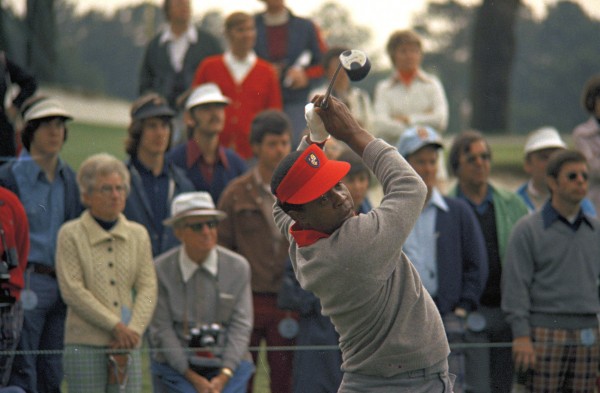
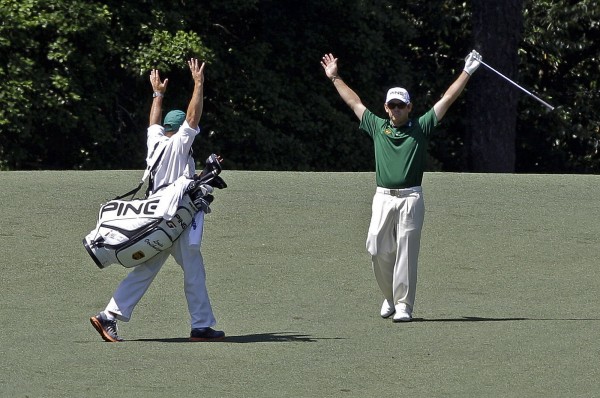
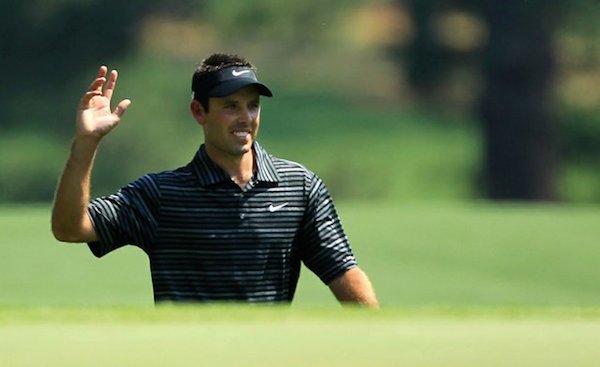
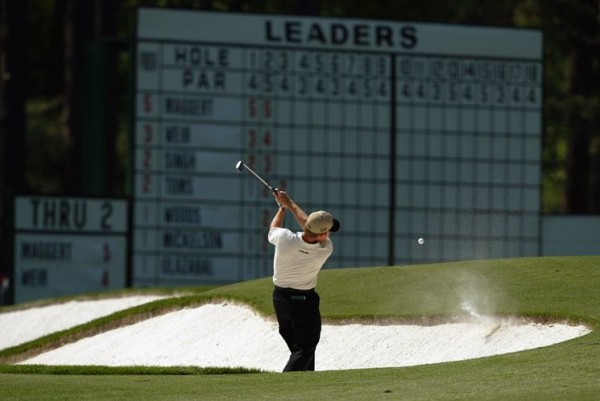
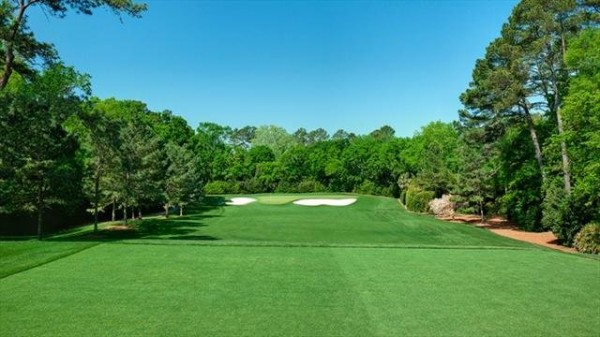

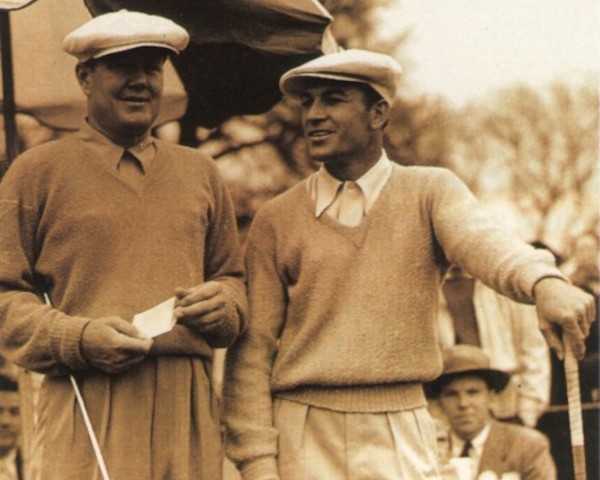
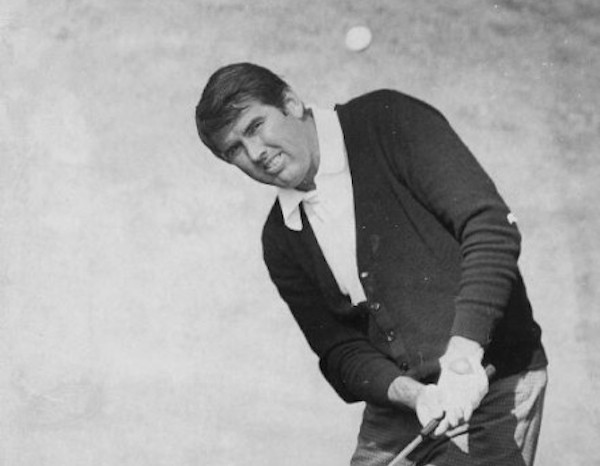

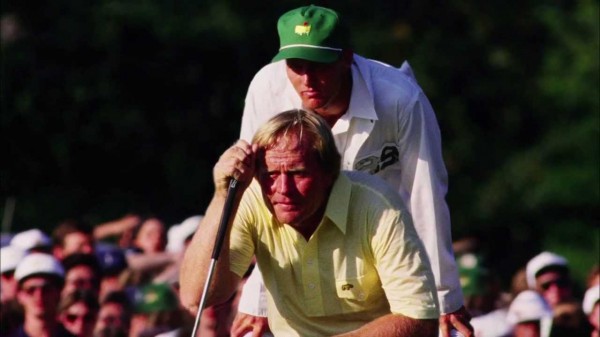




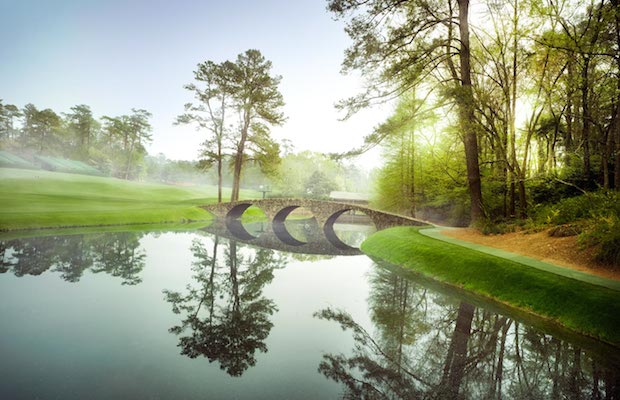
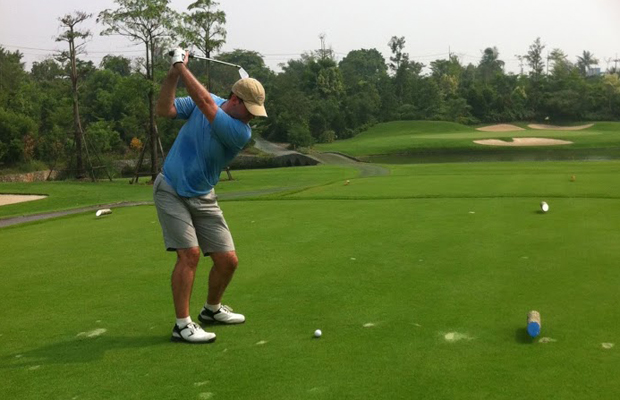

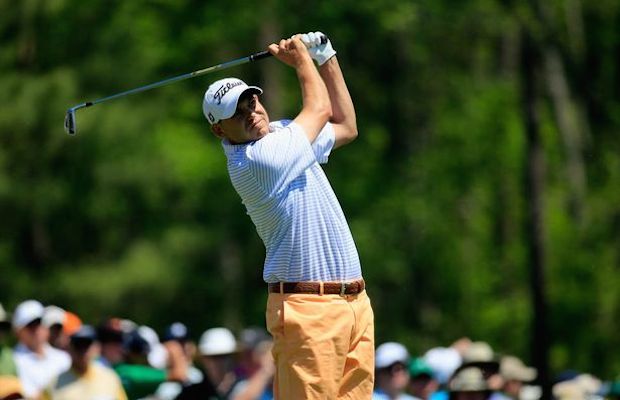
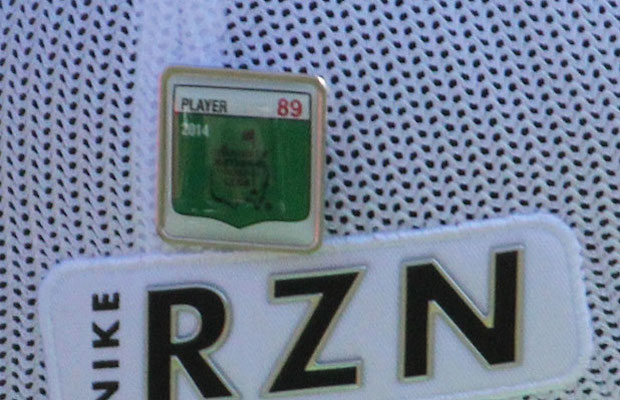
















Pete McGill
Dec 16, 2018 at 3:22 am
I remember Watkins’ putt like it was yesterday. Yikes!
Lawrence Williams
Apr 15, 2014 at 2:11 pm
Well done my man, well done!
DavidI
Apr 9, 2014 at 8:51 am
Great read, really nicely written!
cheeks
Apr 8, 2014 at 5:53 pm
Fantastic piece, thank you Pete! Really enjoyed this, looking forward to the Back 9.
Floor-is
Apr 8, 2014 at 5:19 pm
What the hell is a double eagle? You’re a golf website guys, stop making up (stupid) names for things we already have names for. Was it an albatross? Yes it was!
Pete
Apr 8, 2014 at 8:01 pm
Floor, the Masters Tournament calls it a double-eagle, so the company’s pretty good. I’d have agreed with you though if I called it a triple-ace.
Ian
Apr 9, 2014 at 5:32 am
Eagle is two under par isn’t it (On a par 4 or 5)? So a double eagle would be double two under par.
Ian
Apr 9, 2014 at 5:45 am
And while we’re recognizing larger birds for fewer strokes (on par 4’s and 5’s)., I’d officilly like to petition the PGA of America to consider naming a hole in one (again on a par 4 or 5) a Dodo or an Ostrich…
Peakatron
Apr 9, 2014 at 9:33 am
An ace on a par five or a two on a par six is called a Condor.
http://en.wikipedia.org/wiki/Par_%28score%29
Pete
Apr 11, 2014 at 6:17 pm
Sarazen used a DoDo for his double-eagle, just sayin.
Floor-is
Apr 10, 2014 at 3:24 am
And that’s exactly what is the problem! A double eagle isn’t two times an eagle (2x two under for the hole) it’s an eagle plus a birdie (3 under for a single hole). So in that logic it would be called one-and-a-half eagle. Let’s just keep calling it an Albatross.
I’ve shot one, once by the way.
Martin
Apr 8, 2014 at 3:33 pm
Great article.
Keith
Apr 8, 2014 at 2:58 pm
I’m not sure where the +19 par for Duval is coming from. He was +15 (84,75) to miss the cut that year. He actually doubled #1 on Fri right before he made the 10 on #2, so he was +7 after two holes and came back to shoot 75.
Pete
Apr 8, 2014 at 8:06 pm
Nice catch Keith. Duval was 19-over after the debacle on No.2, and that six-hole stretch later in the round got him to 15-over.
jabrch
Apr 8, 2014 at 2:43 pm
Great article Pete!!!! Awesome read!